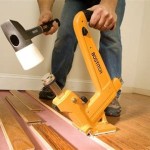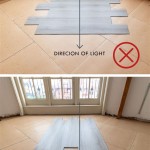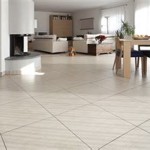Slate Laminate Flooring: A Comprehensive Guide
Slate laminate flooring provides an aesthetically pleasing and cost-effective alternative to natural slate. This type of flooring replicates the look and texture of genuine slate while offering advantages in terms of durability, installation, and maintenance. Understanding the characteristics, benefits, and drawbacks of slate laminate is crucial for homeowners and contractors considering this material for their projects.
The core of slate laminate flooring typically consists of a high-density fiberboard (HDF) or medium-density fiberboard (MDF). This core provides the structural stability of the plank. A photographic layer, designed to mimic the appearance of slate, is applied to the core. This layer is often highly detailed, capturing the variations in color and texture found in natural slate. Finally, a protective wear layer is applied over the photographic layer to protect the flooring from scratches, stains, and fading.
The wear layer is a critical component that determines the durability and longevity of the laminate flooring. It is typically made of aluminum oxide, a highly resistant material that shields the photographic layer from daily wear and tear. The thickness of the wear layer is measured in mils, with thicker layers offering greater protection. A higher mil rating generally indicates a more durable and scratch-resistant flooring option.
Slate laminate flooring is available in a range of thicknesses, typically ranging from 8mm to 12mm. Thicker planks generally provide greater stability and sound insulation. They can also feel more comfortable underfoot compared to thinner planks. The choice of thickness will depend on the specific requirements of the installation environment, including the subfloor conditions and the intended use of the space.
Key Advantages of Slate Laminate Flooring
Slate laminate flooring offers several compelling advantages over natural slate, making it a popular choice for residential and commercial applications. These advantages include cost-effectiveness, ease of installation, and simplified maintenance.
One of the primary advantages of slate laminate flooring is its cost-effectiveness. Natural slate can be expensive, both in terms of the material itself and the labor required for installation. Slate laminate, on the other hand, is significantly more affordable, making it an accessible option for budget-conscious consumers. The lower material cost, combined with reduced installation expenses, can result in substantial savings.
Installation of slate laminate flooring is generally straightforward and can be accomplished by experienced DIY enthusiasts. Most laminate flooring products feature a click-lock system, which allows planks to be easily joined together without the need for adhesives or specialized tools. This simplified installation process can save time and money compared to the installation of natural slate, which often requires professional expertise.
Maintaining slate laminate flooring is relatively simple. The protective wear layer resists staining and scratching, making it easy to clean with regular sweeping and damp mopping. Unlike natural slate, laminate flooring does not require sealing or specialized cleaning products. This ease of maintenance makes it a practical choice for busy households and commercial environments.
Furthermore, slate laminate flooring is often more resistant to moisture than natural slate. While not completely waterproof, the wear layer and core of the laminate provide a degree of protection against spills and dampness. This makes it a suitable option for kitchens, bathrooms, and other areas prone to moisture exposure, provided that spills are promptly cleaned up.
Considerations Before Choosing Slate Laminate Flooring
Despite its many benefits, slate laminate flooring has some limitations that should be considered before making a purchase. Understanding these potential drawbacks is essential for making an informed decision.
While slate laminate flooring effectively mimics the appearance of natural slate, it lacks the inherent texture and unique variations found in genuine stone. The photographic layer can provide a convincing visual representation, but it will not replicate the natural irregularities and imperfections that characterize natural slate. This can be a significant consideration for those seeking the authentic look and feel of real stone.
Slate laminate flooring is not waterproof. While it can resist moisture to some extent, prolonged exposure to water can cause the core to swell and warp. This is particularly true if water penetrates through the seams between planks. Therefore, it is essential to address spills promptly and to avoid using excessive amounts of water when cleaning the floor. In areas with high moisture levels, such as bathrooms, it is important to ensure proper ventilation and to consider using sealant along the edges of the flooring.
The durability of slate laminate flooring is dependent on the thickness of the wear layer. Lower-quality laminate flooring products may have a thin wear layer that is prone to scratching and scuffing. Over time, these scratches can become visible and detract from the overall appearance of the floor. Therefore, it is advisable to choose laminate flooring with a thicker wear layer, especially in high-traffic areas.
Unlike natural slate, which can be refinished or restored, slate laminate flooring cannot be sanded or refinished. If the wear layer is damaged beyond repair, the only option is to replace the affected planks or the entire floor. This can be a significant disadvantage compared to natural slate, which can be restored to its original condition through professional refinishing.
Installation Best Practices for Slate Laminate Flooring
Proper installation is crucial for ensuring the longevity and performance of slate laminate flooring. Following best practices during the installation process can help prevent problems such as buckling, gapping, and moisture damage.
Before installing slate laminate flooring, it is essential to prepare the subfloor properly. The subfloor should be clean, level, and dry. Any unevenness or irregularities in the subfloor can cause the laminate flooring to flex and potentially damage the click-lock system. If necessary, the subfloor should be repaired or leveled with a self-leveling compound.
An underlayment should be installed between the subfloor and the laminate flooring. The underlayment provides cushioning, sound insulation, and moisture protection. It also helps to smooth out minor imperfections in the subfloor. Choose an underlayment that is compatible with laminate flooring and appropriate for the specific installation environment.
Acclimate the laminate flooring to the installation environment for at least 48 hours before installation. This allows the planks to adjust to the temperature and humidity levels of the room, which can help prevent expansion and contraction issues after installation. Store the planks in a flat, dry area and away from direct sunlight.
When installing the laminate flooring, leave an expansion gap around the perimeter of the room and around any fixed objects, such as pipes or door frames. This allows the flooring to expand and contract with changes in temperature and humidity without buckling or damaging the surrounding structures. The recommended expansion gap is typically specified by the manufacturer.
Use the appropriate tools for cutting the laminate flooring, such as a circular saw or a laminate cutter. These tools will provide clean, precise cuts without damaging the edges of the planks. Always wear safety glasses and other appropriate safety gear when cutting laminate flooring.
After installing the laminate flooring, clean the surface with a damp mop to remove any dust or debris. Avoid using harsh chemicals or abrasive cleaners, as these can damage the wear layer. Regularly sweep or vacuum the floor to prevent the accumulation of dirt and grit, which can scratch the surface.
By understanding the advantages, limitations, and installation best practices for slate laminate flooring, homeowners and contractors can make informed decisions and achieve successful flooring installations that provide both aesthetic appeal and long-term durability. Proper maintenance and care will further extend the lifespan of the flooring and preserve its beauty for years to come.

Goodhome Slate Black Tile Effect Laminate Flooring 2 53m² Diy At B Q

Falquon High Gloss Grizzly Slate Laminate Tile Flooring 8mm Exclusive Surfaces Direct

Flooring Kitchen Laminate In Tile Floor

Krono Original Impressions Pewter Slate K388 Os 8mm Ac4 Laminate Flooring

Binyl Pro 8mm Brecon Slate Tile Effect 4v Waterproof Laminate Flooring Direct

Kronospan Stone Impression Pewter Slate Flooring Supplies

Goodhome Harmonia Black Slate Effect Laminate Flooring 2 176m² Diy At B Q

Krono 8mm Nightfall Slate Tile Laminate Flooring

12mm Laminate Slate Stone Fg196ss07 Aquasurf Collection Factory Flooring Liquidators

Lifeproof Castle Black Slate 6 Mil X 12 In W 24 L Lock Waterproof Vinyl Tile Flooring 23 8 Sqft Case I584102l The Home Depot
Related Posts








